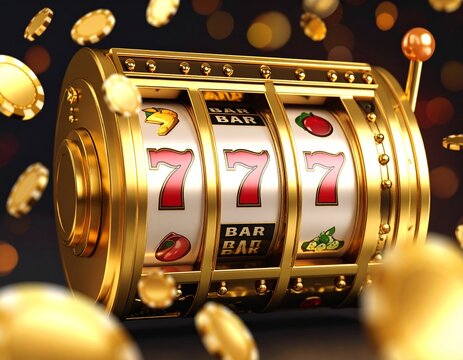
Slot games have come a long way since their invention in the late 19th century. What started as a mechanical gambling machine with just a Slotmaxwin few symbols and reels has transformed into a multi-billion-dollar global industry with sophisticated graphics, advanced technology, and worldwide digital access. Today, slot enthusiasts can spin reels from the comfort of their homes or on-the-go using mobile devices. In this article, we’ll take a journey through time to explore how slot games have evolved — from the early days of mechanical machines to the rise of digital, online experiences in 2025.
1. The Birth of the Slot Machine: The Liberty Bell
The first slot machine was invented by Charles Fey in 1895 in San Francisco. Called the Liberty Bell, this mechanical marvel featured three reels and five symbols — horseshoes, diamonds, spades, hearts, and the Liberty Bell. When players landed three bells in a row, they won the highest payout of 50 cents. The simplicity and automated payout mechanism made it a hit, eventually inspiring the mass production of slot machines in bars, saloons, and cigar shops. These early slots were purely mechanical, operated by pulling a lever that spun the reels — giving rise to the nickname “one-armed bandit.”
2. Electromechanical Advancements in the 1960s
By the 1960s, mechanical slots began incorporating electromechanical components, allowing for more advanced features like flashing lights, multiple paylines, and automatic coin payouts. One notable example is Bally’s Money Honey, the first fully electromechanical slot introduced in 1964. This innovation revolutionized gameplay by allowing machines to hold larger jackpots and offer new types of wins. It also paved the way for the button spin, replacing the traditional pull handle and introducing new levels of player interaction. Slot machines were evolving rapidly — both in function and appeal.
3. The Video Slot Revolution of the 1980s and 1990s
The next major leap came with the rise of video slots in the late 20th century. Instead of using physical reels, these games displayed spinning reels on a screen, powered entirely by microchips and software. This opened the door for thematic slots, bonus features, animated sequences, and immersive sound design. The classic “Wheel of Fortune” slot and Cleopatra became iconic titles during this era. Casinos loved video slots because they offered more flexibility in game design and could attract a younger, tech-savvy audience. By the end of the 1990s, video slots dominated casino floors around the world.
4. The Digital Boom: Online Slots Enter the Scene
The early 2000s marked the beginning of the online casino era, allowing players to enjoy slot games via the internet. With the emergence of platforms like Microgaming and NetEnt, slots quickly became one of the top digital gambling attractions. These games mimicked the experience of land-based slots while introducing features like progressive jackpots, autoplay, high RTPs, and free spin bonuses. The transition from physical machines to online gaming made slots more accessible than ever, giving rise to a global community of players. As internet speeds improved, so did game quality — with 3D graphics, cinematic intros, and interactive bonus rounds becoming common.
5. Mobile and Megaways: The New Age of Slot Play
With smartphones and tablets becoming widespread in the 2010s, slot gaming naturally shifted to mobile platforms. Developers began creating games using HTML5 technology, ensuring compatibility across all devices without needing extra downloads or software. Today in 2025, mobile slots often launch first, with developers focusing on touchscreen-optimized interfaces and fast loading times. Meanwhile, innovation in mechanics led to systems like Megaways, which change the number of symbols on each reel per spin — offering hundreds of thousands of ways to win. Games like Bonanza and Buffalo King Megaways have redefined how modern players engage with slot content.
6. The Future: Virtual Reality and Blockchain Slots
Looking ahead, slot gaming continues to embrace emerging technologies. Virtual Reality (VR) slots are in development, aiming to offer a fully immersive casino experience complete with interactive environments, avatars, and realistic soundscapes. Blockchain and crypto slots are also gaining traction, offering greater transparency, security, and decentralization. Smart contracts ensure fairness, and crypto-friendly casinos make depositing and withdrawing faster and easier for global players. As technology advances, one thing is certain — slot games will continue to innovate, pushing boundaries and delivering new experiences to players worldwide.
Final Thoughts
From the spinning reels of the Liberty Bell to the interactive worlds of online and mobile slots, the evolution of slot games reflects a broader story of innovation and entertainment. What started as a mechanical device in a workshop has become a global digital phenomenon enjoyed by millions. With constant advancements in design, technology, and gameplay, slot machines show no signs of slowing down. Whether you prefer pulling a lever or tapping a screen, there’s never been a more exciting time to be a slot player.
Let me know if you’d like this article tailored for a casino affiliate blog, formatted for SEO, or converted into a downloadable format like PDF or WordPress draft!
0 Comments